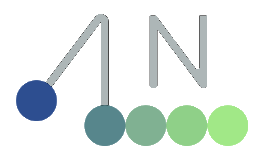Development#
This document is a guide for developers who want to contribute to the project or understand its internal workings in more detail.
Please refer to CONTRIBUTING.md for how to best contribute to Newton and relevant legal information (CLA).
Installation#
To install Newton, see the Installation guide.
Python Dependency Management#
uv lockfile management#
When using uv, the lockfile
(uv.lock) is used to resolve project dependencies into exact versions for reproducibility among different machines.
We maintain a lockfile in the root of the repository that pins exact versions of all dependencies and their transitive dependencies.
Sometimes, a dependency in the lockfile needs to be updated to a newer version.
This can be done by running uv lock --upgrade-package <package-name>:
uv lock --upgrade-package warp-lang
uv lock --upgrade-package mujoco-warp
uv also provides a command to update all dependencies in the lockfile:
uv lock -U
Remember to commit uv.lock after running a command that updates the lockfile.
Running the tests#
The Newton test suite supports both uv and standard venv workflows,
and by default runs in up to eight parallel processes. On some systems, the
tests must be run in a serial manner with --serial-fallback due to an
outstanding bug.
Pass --help to either run method below to see all available flags.
# install development extras and run tests
uv run --extra dev -m newton.tests
# install dev extras (including testing & coverage deps)
python -m pip install -e .[dev]
# run tests
python -m newton.tests
Most tests run when the dev extras are installed. The tests that run examples that use PyTorch to inference an RL policy are skipped if the torch dependency is not installed. In order to run these tests, include the torch-cu12 extras:
# install development extras and run tests
uv run --extra dev --extra torch-cu12 -m newton.tests
# install both dev and torch-cu12 extras (need to pull from PyTorch CUDA 12.8 wheel index)
python -m pip install --extra-index-url https://download.pytorch.org/whl/cu128 -e .[dev,torch-cu12]
# run tests
python -m newton.tests
To generate a coverage report:
# append the coverage flags:
uv run --extra dev -m newton.tests --coverage --coverage-html htmlcov
# append the coverage flags and make sure `coverage[toml]` is installed (it comes in `[dev]`)
python -m newton.tests --coverage --coverage-html htmlcov
The file htmlcov/index.html can be opened with a web browser to view the coverage report.
Code formatting and linting#
Ruff is used for Python linting and code formatting. pre-commit can be used to ensure that local code complies with Newton’s checks. From the top of the repository, run:
uvx pre-commit run -a
python -m pip install pre-commit
pre-commit run -a
To automatically run pre-commit hooks with git commit:
uvx pre-commit install
pre-commit install
The hooks can be uninstalled with pre-commit uninstall.
Typos#
To proactively catch spelling mistakes, Newton uses the typos tool. Typos scans source files for common misspellings and is integrated into our pre-commit hooks, so spelling errors in both code and documentation are flagged when you run or install pre-commit (see above). You can also run typos manually if needed. Refer to the typos documentation for more details on usage and configuration options.
Dealing with false positives#
Typos may occasionally flag legitimate project-specific terminology, domain terms, or variable names as misspellings (false positives). To handle these, the Newton codebase configures typos in pyproject.toml at the repository root.
False positives are managed as follows:
File exclusions: The
[tool.typos]section includesfiles.extend-excludeto ignore matching files and directories, such asexamples/assetsand specific model or asset file types (e.g.,*.urdf,*.usd).Word allowlist: Words or acronyms that would otherwise be flagged can be listed in
[tool.typos.default.extend-words](e.g.,ba,HAA).Identifier allowlist: Specific identifiers, such as variable or constant names, can be declared in
[tool.typos.default.extend-identifiers](e.g.,PNGs).
When typos reports a word that is valid within the Newton codebase, you can add it to the appropriate section in pyproject.toml to suppress future warnings. After updating, re-run typos (or pre-commit) to confirm that the word is ignored. Use these options to keep the codebase clean while ensuring needed flexibility for accepted project-specific words and identifiers.
Using a local Warp installation with uv#
Use the following steps to run Newton with a local build of Warp:
uv venv
source .venv/bin/activate
uv sync --extra dev
uv pip install -e "warp-lang @ ../warp"
The Warp initialization message should then properly reflect the local Warp installation instead of the locked version,
e.g. when running python -m newton.examples basic_pendulum.
Building the documentation#
To build the documentation locally, ensure you have the documentation dependencies installed.
rm -rf docs/_build
uv run --extra docs --extra sim sphinx-build -W -b html docs docs/_build/html
python -m pip install -e .[docs]
cd path/to/newton/docs && make html
The built documentation will be available in docs/_build/html.
Testing documentation code snippets#
The doctest Sphinx builder is used to ensure that code snippets in the documentation remain up-to-date.
The doctests can be run with:
uv run --extra docs --extra sim sphinx-build -W -b doctest docs docs/_build/doctest
python -m sphinx -W -b doctest docs docs/_build/doctest
For more information, see the sphinx.ext.doctest documentation.
Style Guide#
Follow PEP 8 for Python code.
Use Google-style docstrings (compatible with Napoleon extension).
Write clear, concise commit messages.
Keep pull requests focused on a single feature or bug fix.
Use kebab-case instead of snake_case for command line arguments, e.g.
--use-cuda-graphinstead of--use_cuda_graph.
Roadmap and Future Work#
(Placeholder for future roadmap and planned features)
Advanced solver coupling
More comprehensive sensor models
Expanded robotics examples
See the GitHub Discussions for ongoing feature planning.
Benchmarking with airspeed velocity#
The Newton repository contains a benchmarking suite implemented using the airspeed velocity framework. The full set of benchmarks are intended to be run on a machine with a CUDA-capable GPU.
To get started, install airspeed velocity from PyPI:
python -m pip install asv
If airspeed velocity has not been previously run on the machine, it will need to be initialized with:
asv machine --yes
To run the benchmarks, run the following command from the root of the repository:
asv run --launch-method spawn main^!
The benchmarks discovered by airspeed velocity are in the asv/benchmarks directory. This command runs the
benchmark code from the asv/benchmarks directory against the code state of the main branch. Note that
the benchmark definitions themselves are not checked out from different branches—only the code being
benchmarked is.
Tips for writing benchmarks#
Rather than running the entire benchmark suite, use the --bench BENCH, -b BENCH flag to filter the benchmarks
to just the ones under development:
asv run --launch-method spawn main^! --bench example_anymal.PretrainedSimulate
The most time-consuming benchmarks are those that measure the time it takes to load and run one frame of the example
starting from an empty kernel cache.
These benchmarks have names ending with time_load. It is sometimes convenient to exclude these benchmarks
from running by using the following command:
asv run --launch-method spawn main^! -b '^(?!.*time_load$).*'
While airspeed velocity has built-in mechanisms to determine automatically how to collect measurements,
it is often useful to manually specify benchmark attributes like repeat and number to control the
number of times a benchmark is run and the number of times a benchmark is repeated.
class PretrainedSimulate:
repeat = 3
number = 1
As the airspeed documentation on benchmark attributes notes,
the setup and teardown methods are not run between the number iterations that make up a sample.
These benchmark attributes should be tuned to ensure that the benchmark runs in a reasonable amount of time while also ensuring that the benchmark is run a sufficient number of times to get a statistically meaningful result.
The --durations all flag can be passed to the asv run command to show the durations of all benchmarks,
which is helpful for ensuring that a single benchmark is not requiring an abnormally long amount of time compared
to the other benchmarks.

